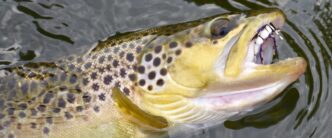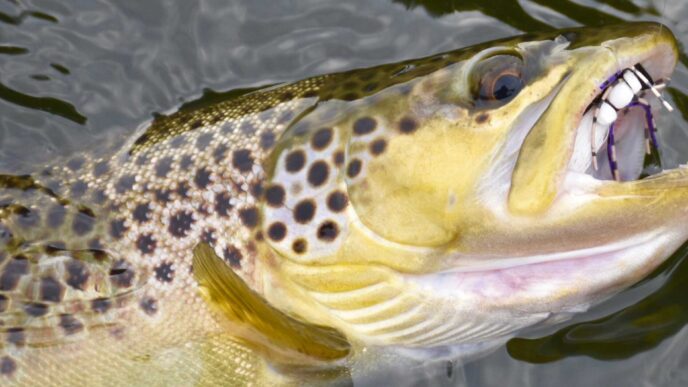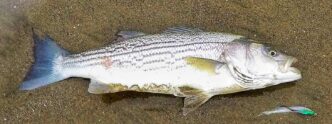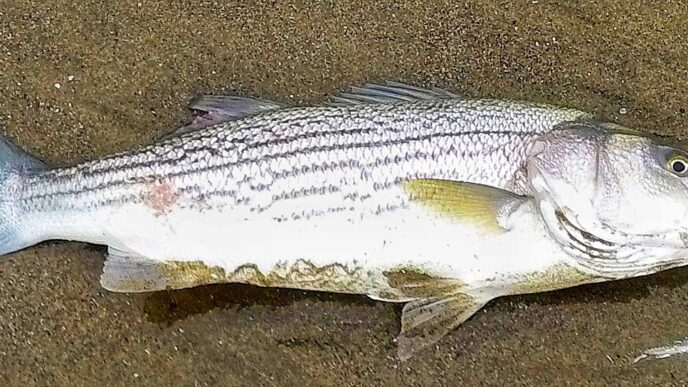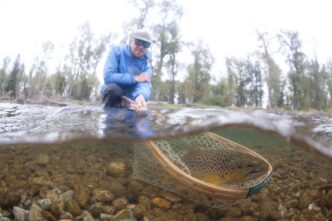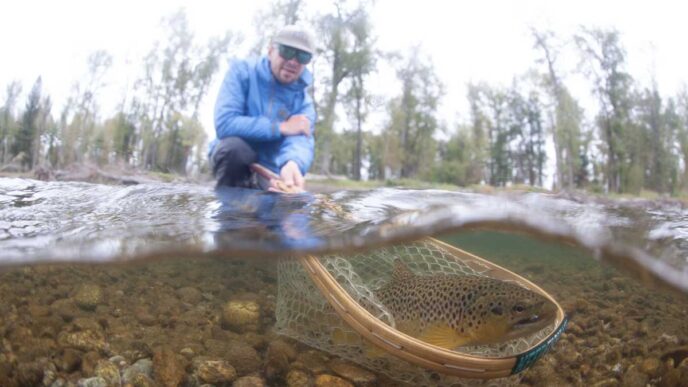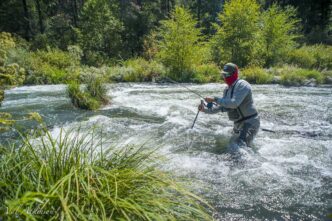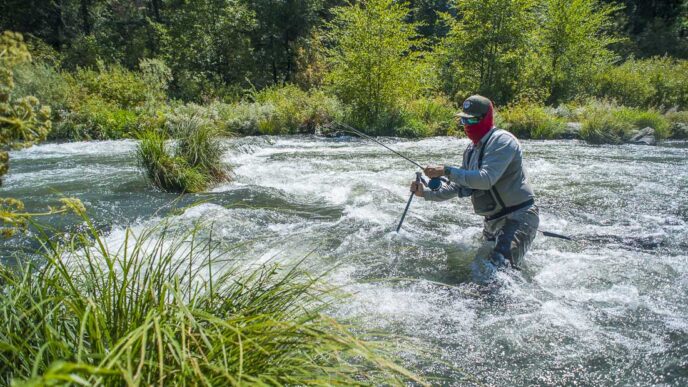The Rest of the Story
With hundreds of new fly patterns arriving on the scene every year, it’s sometimes hard to track down who, when, or where any given fly pattern was created. Add to that the fact that few flies are entirely original, but rather variations of variations of variations.
Most of the Balanced Leeches I tie are on size #4, 90-degree jig hooks. A few of my favorite color combinations include a brown marabou tail/Hareline Ice Dub Harder’s Bloody Black dubbing with a fluorescent orange bead, or a black marabou tail/Hareline Ice Dub Peacock Black dubbing and a chartreuse bead.
Spokane, WA tyer Jerry McBride came up with the notion of “balanced flies” about twenty years ago and the unlikely introduction of pins and beads into balanced fly construction. Phil Rowley discovered the effectiveness of the Balanced Leech pattern and helped launch it into the stillwater staple it is today. With a nod and a wink to Paul Harvey, here’s “the rest of the story.”
“Phil (Rowley) had an arrangement teaching stillwater schools back in Manitoba for a number of years,” said McBride. “It was just fabulous fishing, so a friend and I went back for a week and fished with him. We had one day where the wind was blowing so hard it was literally dangerous to get out on the water, so we stayed in and tied flies. I tied some Balanced Leeches.”
“Jerry had done an article for Fly Tyer magazine,” Rowley explained. “I remember reading it and then I started using them. They’ve made a huge difference in my stillwater fishing. Brian Chan and I were fishing together in a boat before a school we were giving for a lodge in BC (British Columbia). He was using a traditional non-balanced leech and I was using a Balanced Leech. The two flies were five or six feet apart under indicators, and the balanced leech certainly got more attention than the traditional one. That sort of sold the concept in my mind.”

“I started tying them on down-eyed hooks,” said McBride. “But when you got the material tied on the hook it was hard to find the eye of the hook to tie it on. I used a little threader at first, which worked fine. I didn’t have a problem with it, but a lot of other people did.”
“My contribution to Jerry’s original concept was getting jig hooks involved, either 60 or 90 degree, it doesn’t matter,” said Rowley. “I would often obscure the eye of the hook, so I’d have this wonderful Balanced Leech but I couldn’t tie it on. I originally started using 90-degree jig hooks that were for bass and panfish because you couldn’t find any small jig hooks at that time. With the jig hook when you finished the fly the eye of the fly was visible, so you could tie the dumb thing on!”
“I originally tied a lot of them with filoplume feathers,” said McBride. “I got that out of Phil Rowley’s book Fly Patterns for Stillwater. The technical name for the feather is aftershaft, but everyone calls them filoplumes. [They are most commonly found on ringneck pheasant rumps, underneath the colorful top feathers.] “When you put them in the water they’re very flexible and they shimmer. Out of the water it looks like a drowned cat, but when it’s in the water it comes alive.”
“One thing I always try to make a point of is that the Balanced Leech is not just an indicator fly,” Rowley said. “They are also a great cast and retrieve fly because they’ll jig, pitch and undulate under water. I’ve actually shot some underwater footage that shows it’ll land nose-down on the bottom so you can hop them over a lightly weeded or rocky bottom just like a bass fisherman would use a jig. They land nose-down, tail up, tail waving around looking like a crayfish. It just looks good to eat with that jigging motion.”
“I’ve used them in Argentina with great affect on Jurassic Lake,” Rowley added, “in Eastern and Western states and Canada doing schools and presentations. It’s a fly I always tend to feature in tying demonstrations.”
You can tie almost any subsurface fly using jig hooks, pins and beads, so “balanced flies” are not really so much fly patterns as an innovative new platform upon which to imitate almost anything that swims.
“Phil Rowley is the reason people know the Balanced Leech,” McBride said. “He’s very generous in giving me credit. Some people wouldn’t do that.”
Filo-Bugger Balanced Leech by Jerry McBride and Phil Rowley
Recipe:
- Hook: Daiichi 4640 or 4647 #10 (or equivalent)
- Thread: UTC 70 black
- Pin: Hareline Balanced Fly Pins (or equivalent)
- Bead: ⅛” (3.3mm) tungsten
- Tail: Select marabou feathers with Crystal Flash pearl
- Body: Pheasant rump aftershaft feathers (filoplume) spun in dubbing loop
Tying Steps:

- Attach the pin with plenty of wraps and a good layer of super glue. Leave room for about two more beads behind the bead.

- Tie in select marabou fiber tail (about one shaft-length) plus two strands of pearl Crystal Flash on each side.

- Make a dubbing loop, insert 3-4 filoplume feathers and wrap forward. Add more filoplume feathers wrapping forward to cover the hook shank and pin. You will need to repeat this step 3-4 times.

- Whip finish behind the eye of the hook, then cover wraps with a drop of Super Glue.

- Finished Filo Balanced Leech.









